For cepezed, like at local governments, companies, schools and other institutions, the week of 10 October will be all about sustainability. We will broaden and deepen our knowledge with a series of morning lectures.
Our designs invariably score high in terms of sustainability and circularity. Even buildings with specialized MEP-requirements, such as laboratories and research buildings, achieve a high BREEAM certification. And although not building at all is of course the most sustainable option, at least cepezed's new buildings do not lose their value quickly. For in our design philosophy, ‘dismountability’ and adaptability are paramount, as is efficient use of materials.
deepening knowledge
With almost fifty years of experience, we can support our design philosophy with more and more good examples, and we continue to develop. To broaden and deepen the knowledge within the office, experts are regularly invited to give a lecture. During Green Week, guest lecturers will even come along every day. Andy van den Dobbelsteen, professor of Climate Design & Sustainability at TU Delft, appropriately kicks off on Monday by highlighting the urgent need for sustainable architecture.
green week at cepezed
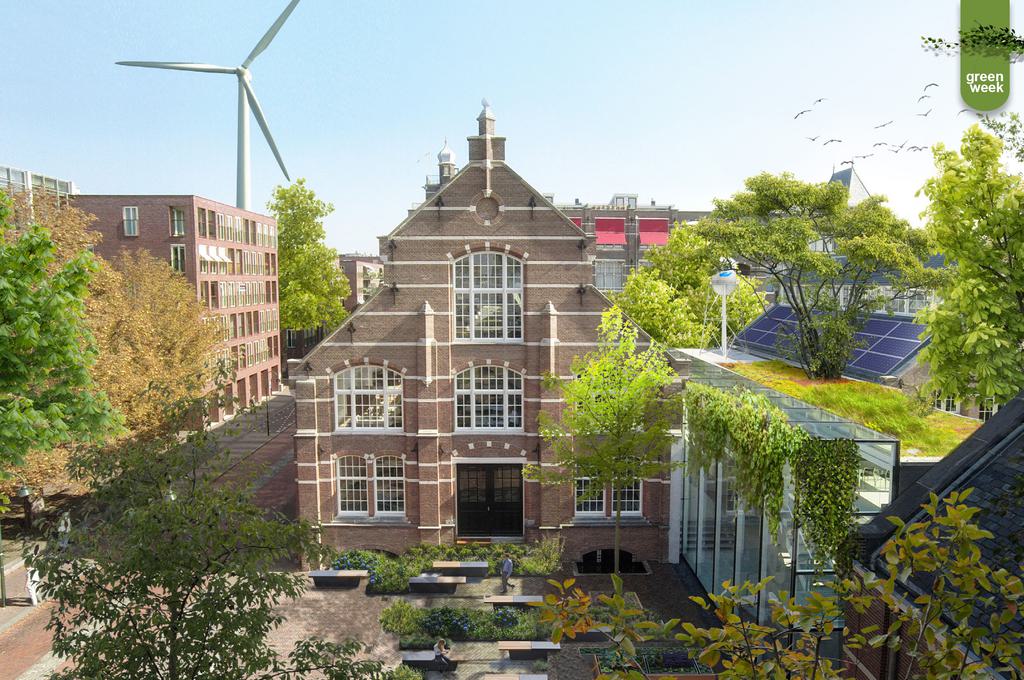
future-proof architecture
If you assemble buildings in parts, and dry, this basically means you can also dismount them. And elements can easily be added, replaced or reused elsewhere after demolition. This is the way we work and hence our architecture is future-proof: we design for uncertainty. Instead of dictating the future, we want to offer new future users a practical helping hand. Like with the Temporary Amsterdam Court, which after six years is going to serve a new and completely different use in Enschede.
A demountable and moveable building asks for a new kind of ownership. The value of such a building is intrinsic, it's about the material and the fine interior spaces, not about where it stands. This is still unexplored territory in the architecture and construction business, because of the complicated question: What exactly do you own in such a case? The development branch of cepezed (cepezedprojects) and the construction management branch (cepezedbouwteam) were deliberately set up to explore this area in practice and make a difference.
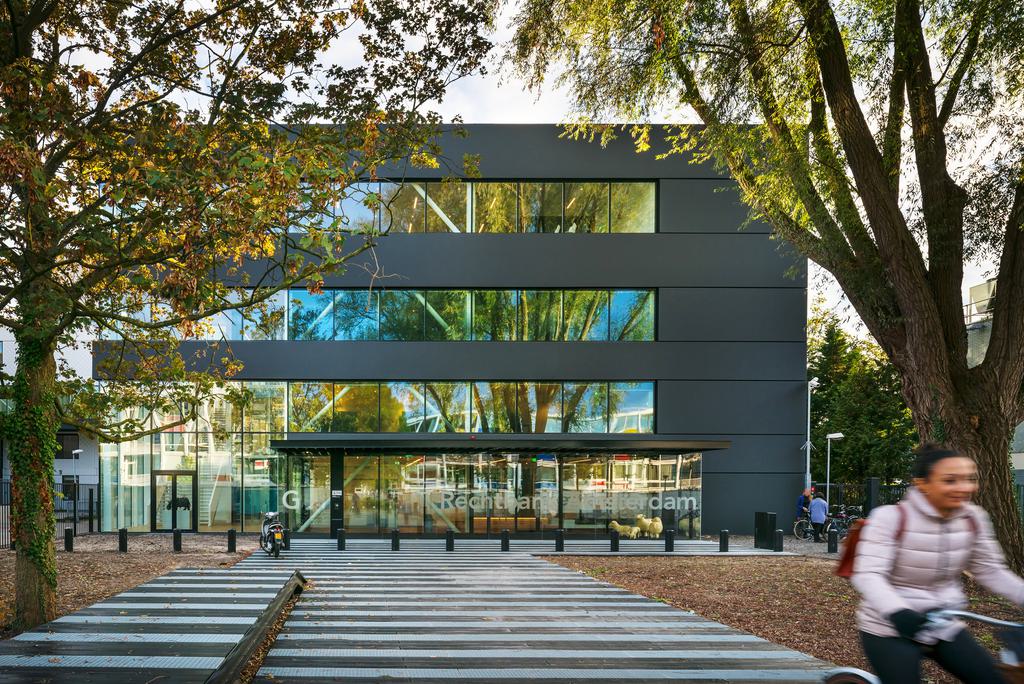
stewart brand
cepezed's design philosophy is indebted to the ideas of Stewart Brand, an American biologist interested in the way people live together and organize their world. In 1994, Brand wrote How Buildings Learn: What Happens After They're Built. He argues that exorbitantly high prices in the real estate market inhibit innovation and undermine community spirit. The solution? Flexible architecture. Moreover, the climate also benefits from this.
According to Brand, flexible architecture should be modular and adaptable, because each ‘layer’ of a building loses its value at a different pace. We take this into account in our designs. For instance, by not letting the structure obstruct a completerly free and flexible floor plan; inner walls can be moved if the function changes. And by always keeping installations easily accessible, preventing that a ceiling needs to be broken open to repair a cable or pipe.
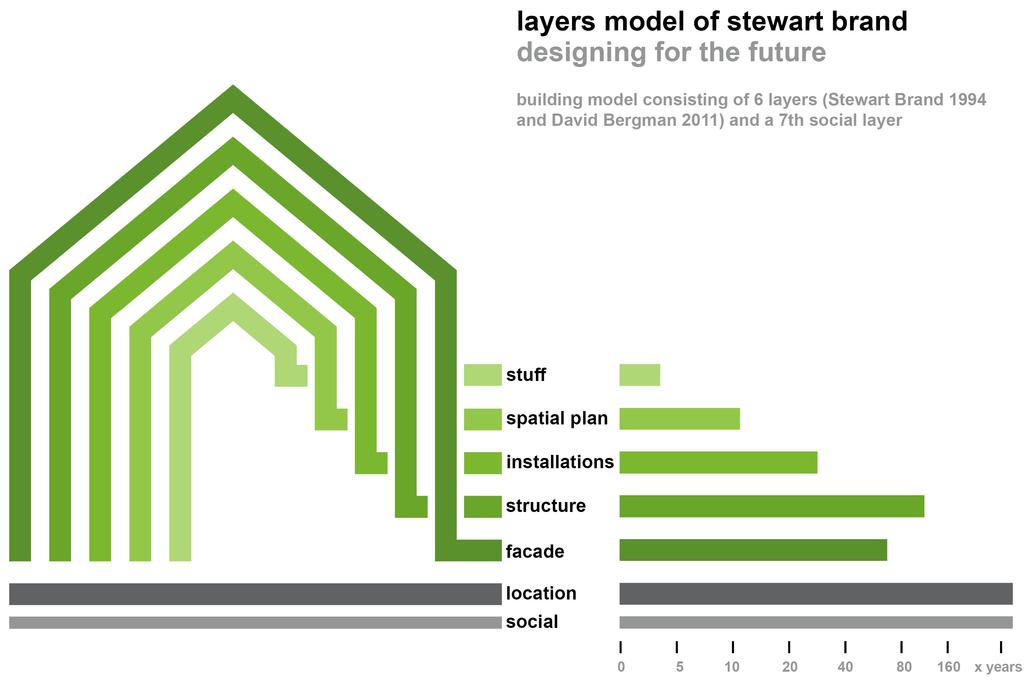
IQ/kg
Besides Brand’s layer theory, the circular economy plays a role. cepezed focuses on refuse/rethink, reduce and re-use; the three r's of the 9R model with the most impact. Our buildings are as compact as possible and we keep a sharp focus on our own unit of measurement IQ/kg, which indicates how 'smart' the amount of material is used. Therefor we naturally strive for design solutions with a high IQ/kg, and the reduction of material.
The extent to which a design is nature-inclusive could also profit if we came up with an own measuring unit. Because nature inclusiveness goes beyond a green roof, putting up some beehives and hanging up bat and bird houses. Among other things, height, wind sensitivity and the planting plan are imperative. If possible, we try to use the planting on and around the building to intensify biodiversity in the area, ideally in cooperation with an ecologist and landscape architect.
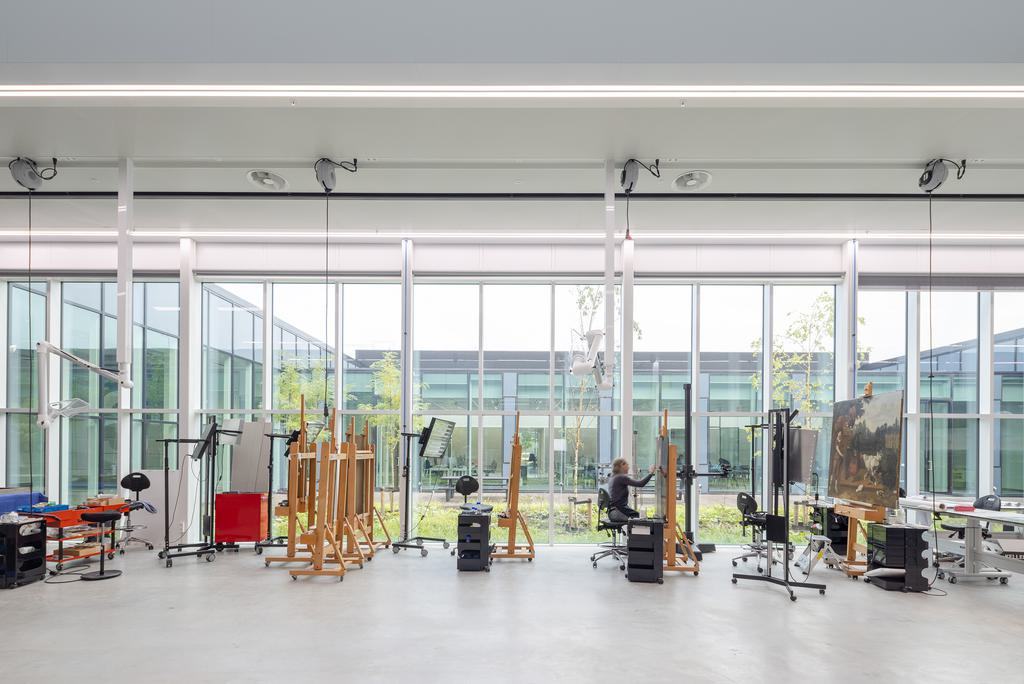
plant wall
It is now known that the presence of plants promotes people's mental health and stimulates creativity. In a building where interaction and encounters are paramount, we therefore opt for lots of plants, sometimes in the form of a plant wall. Such a high wall, often over several floors, has an immediate spatial effect and purifies the air. For the well-being of the users, we also always provide plenty of daylight deep into the building and clear routing. With us, corridors and stairs often function as lounges, where it is nice to catch up.
test cases
Not all aspects of sustainable building and architecture can be covered in Green Week. Such as circularity in the sense of reusing existing material. This is something we are becoming increasingly familiar with, thanks to great test cases like The Green House and the VU AB-wing. The latter project concerns a university building on the VU campus, most of which will be demolished, but of which two wings (A and B) will remain in temporarily use, partly for new functions. For that renovation, we 'harvest' reusable material in the wings to be demolished.
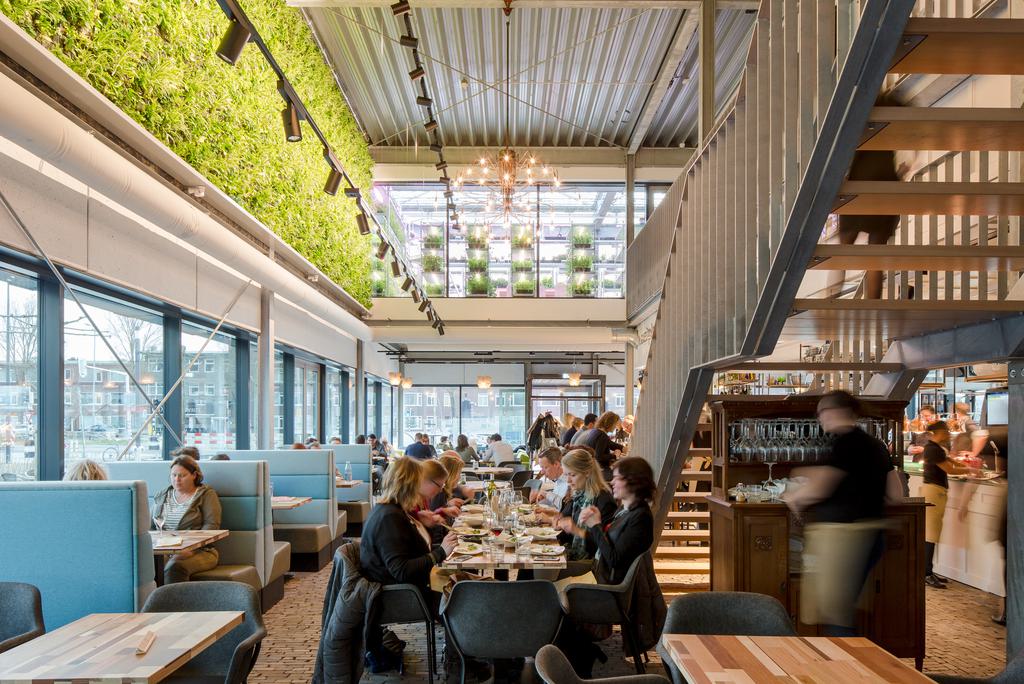
During the Week of Sustainability, the IABR exhibition IT'S ABOUT TIME, which is all about a sustainable future, can also still be visited. The Temporary Court Amsterdam is part of the 'Transition Table' with examples from practice.
More on: VU AB Wing, The Green House and the Temporary Court Amsterdam. And also interesting: CC NL, Plus Ultra Amsterdam, university of applied sciences Inholland Amsterdam Sluisbuurt, Oldelft, West Betuwe town hall, Wega.punt and Bouwdeel D(emountable).
more about the cepezed Green Week:
• Andy van den Dobbelsteen: think ‘beyond the building’
• Menno Rubbens: towards an intrinsically circular building sector
• Joost Jacobi: the ins and outs of ‘water circular design’
• Chantal van Schaik: the carbon budget is not taken seriously
• MOR studio: architecture should leave something positive rather than use something up
→ Mail bd@cepezed.nl or call our business development team on +31 (0)15 2150000